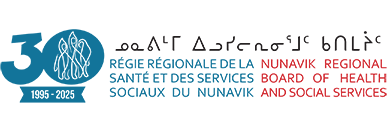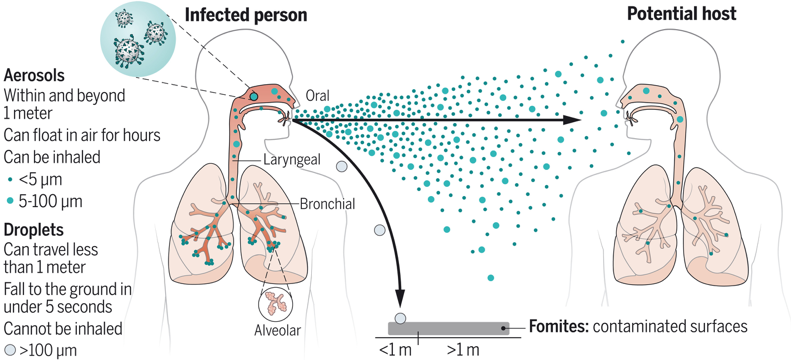Questions ?
If you have any question regarding the airborne transmission of respiratory viruses, including the transmission of COVID-19 during work-related activities, contact the following e-mail address:
healthatwork17@ssss.gouv.qc.ca
Please note that these preventive measures apply in addition to the usual health and safety measures.
Airborne transmission of respiratory viruses, including COVID-19
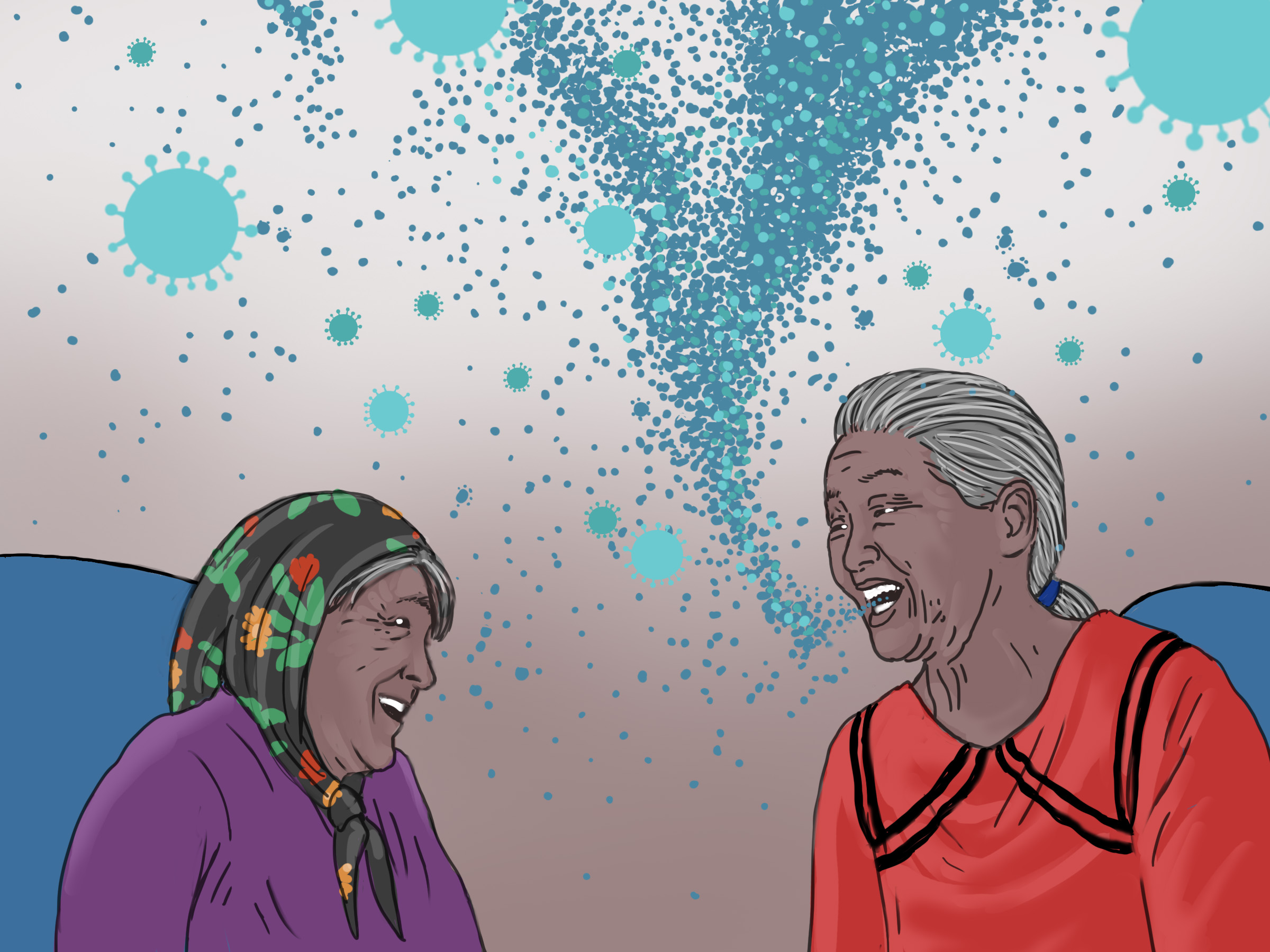
Recommended preventive measures for workers take into account transmission by inhalation of bodily liquid aerosols (airborne transmission).
There is now strong evidence supporting airborne transmission of many respiratory viruses, including COVID-19.
Contaminated aerosols, very small particles of <100 µm (about the diameter of a human hair and smaller) are expelled by an infected individual through expiratory activities such as breathing, talking, coughing, and sneezing. Contrary to droplets, which are particles larger than 100 µm, aerosols can float in the air for hours and travel further than 1-2 meters due to air currents, just like the smoke of a cigarette. They may be inhaled by somebody else (potential host), regardless of the distance of the person (see Figure 1). Of course, the risk of contamination by inhalation is greater in close proximity with an infected person, in poorly ventilated spaces, in crowded areas, or during prolonged exposure to an airborne virus.
Airborne transmission of respiratory viruses
Source: Wang et al., Science 373, 981 (27 August 2021): https://www.science.org/doi/10.1126/science.abd9149
It is currently established that respiratory viruses such as COVID-19 may be transmitted both by people who exhibit symptoms (symptomatic) and those who are infected with the disease but are asymptomatic.
The layered approach for the prevention of COVID-19 and other airborne viruses in the workplace
The best approach to prevent contamination by inhalation is to comply with public health measures and with workplace health and safety control measures. In the following illustration (Figure 2), each slice of cheese (or barrier) represents a layer of defense against the spread of respiratory viruses. The “Swiss Cheese” model recognizes that no single measure is enough to prevent the inhalation of respiratory viruses because each measure (slice) has imperfections (holes). If one slice fails, the next slice may be effective in stopping the virus. The more slices (layers of control) there are in place, the less likely the holes will be “aligned” to let the virus through, and the more likely these multiple measures will work to protect workers and prevent contamination.
The layered approach for the prevention of COVID-19 and other airborne viruses in the workplace
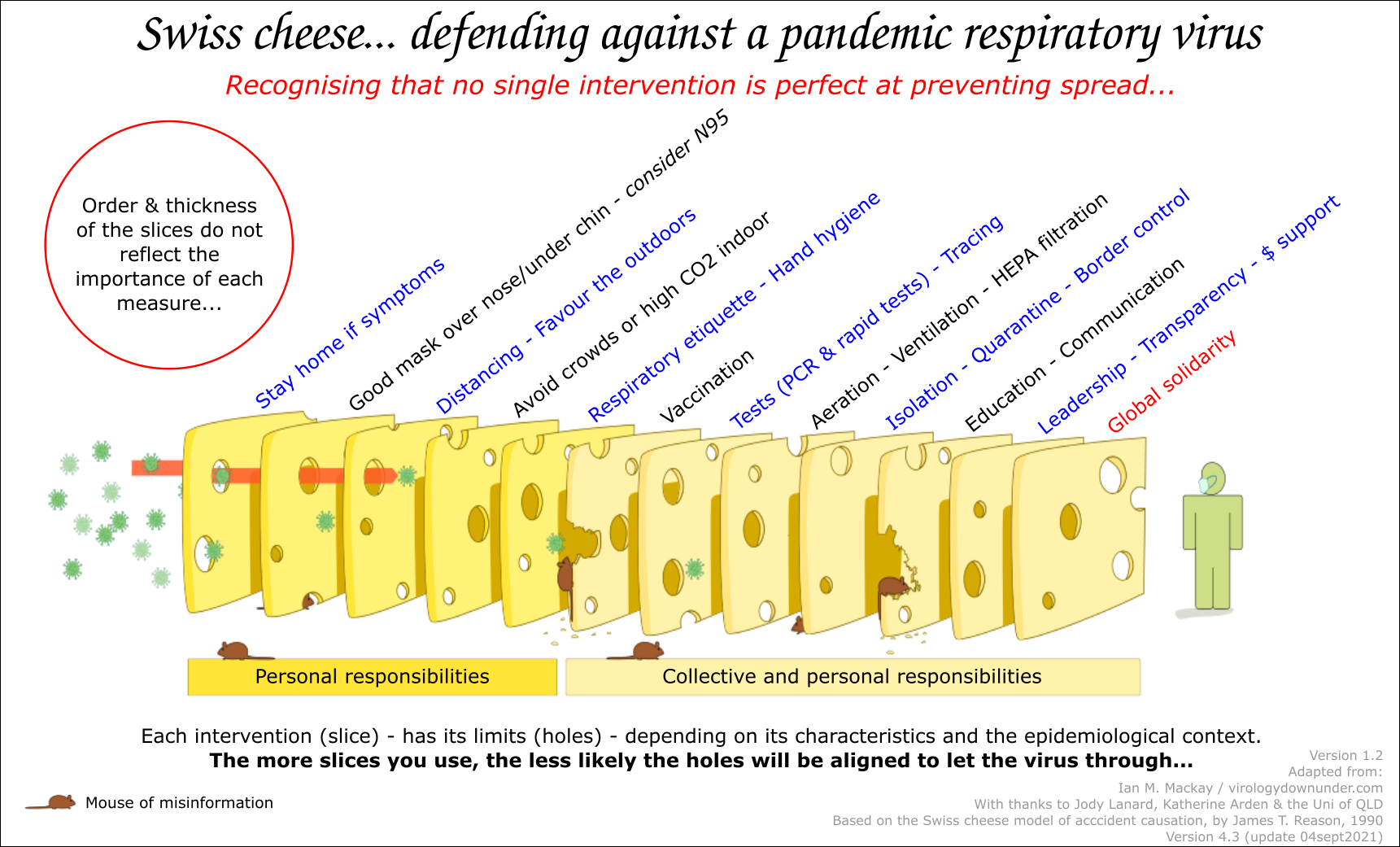
In other words, the more layers there are, the better. Layers include public health measures such as vaccination, respiratory etiquette, hand washing, surface disinfection, etc. Moreover, workplace health and safety control measures include remote work, physical distancing, adequate ventilation, including HEPA filtration of indoor areas when necessary, and wearing a surgical mask for protection or a respirator (for better lateral protection). (See Figures 2 and 3).
Workplace Health and Safety Control Measures
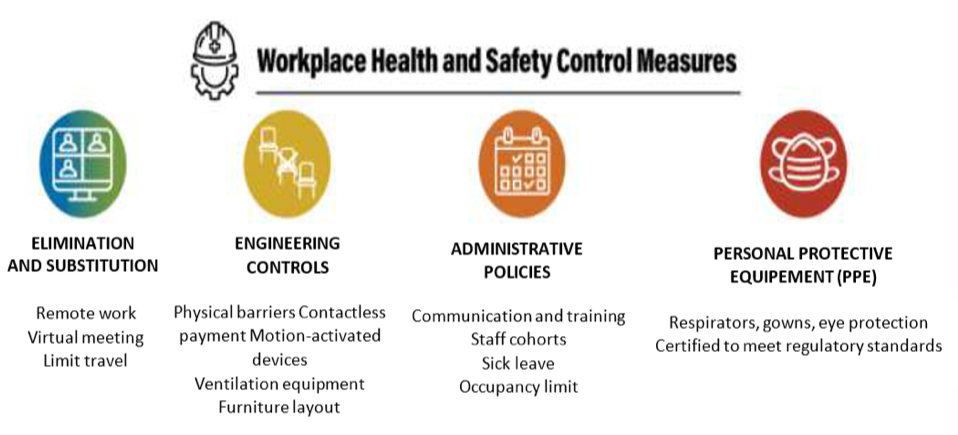
Source: https://www.ccohs.ca/covid19/controls-infographic/index.html
Wearing a respirator: why, when and how?
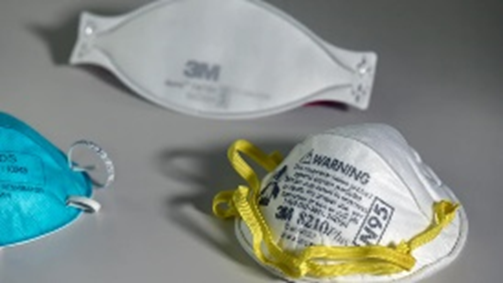
Because respirators are airtight, they provide the best protection against contamination through airborne particles smaller than 100 microns. Respirators are the protection equipment of choice for workers interacting indoors with others not wearing a medical mask, even at a distance greater than 2 metres and regardless of the duration of the interaction. Although there are many models of respirators, the model that is probably the easiest to get is the disposable filtering facepiece respirator (FFP) N95 mask. A disposable N95 respirator without an exhalation valve is necessary to provide bi-directional protection (protecting both the person wearing it and others).
In comparison, a surgical mask is not designed to be airtight when worn. As such, because it is not sealed, it is not as effective as a respirator to prevent the inhalation of airborne contaminants.
Any mask or respirator must be properly worn, meaning that the nose, mouth and chin must be fully covered.
The proper wearing of a respirator (N95 or other) in a workplace must be supervised by a respiratory protection program, as stipulated by sections 45 and following of the Regulation respecting occupational health and safety (ROHS, c. S-2.1, r.13). You can refer to the website of the Réseau de santé publique en santé au travail :
https://www.santeautravail.qc.ca/web/rspsat/dossiers/protection-respiratoire
Fit test and seal check
To ensure that a disposable filtering facepiece respirator (FFPR) N95 is properly used, workers must perform a fit test. They will then learn how to wear it appropriately and to perform a seal check each time the respirator is put on. This device must be in direct contact with clean skin and cannot be hindered by hair, as it will not be airtight.
According to the CNESST: “If the employer can show that logistical difficulties are preventing them from offering fit tests to workers, the use of respiratory protective equipment by these workers without prior fit tests is a temporary measure while waiting on the fit tests. In this case, the employer must plan fit tests for their staff [...].” https://www.cnesst.gouv.qc.ca/en/prevention-and-safety/covid-19/questions-and-answers-covid-19
The respirator fit testing procedure is explained in a video (length : 12 minutes) produced by the U.S. Occupational Safety and Health Administration (OSHA) available online (in English only): https://www.youtube.com/watch?v=D38BjgUdL5U
Note that even if the procedure is well explained, the viewer needs to be aware that the regulation in the USA regulation is slightly different than that of Quebec (cf. Regulation respecting occupational health and safety — ROHS, c. S-2.1, r.13).
- The procedure to properly put on and remove an FFP N95 respirator, including the seal check, can also be viewed in two short videos, available online (in English only):
- Occupational Safety and Health Administration (OSHA). Length: 2 minutes. https://www.youtube.com/watch?v=oU4stQgCtV8
- University of Nebraska. length: 5 minutes. https://www.youtube.com/watch?v=BnXN1OD6VRw
Legal obligations
Legal occupational health and safety obligations for both employers and workers must be applied in the context of infectious contaminants such as COVID-19 and other viruses and bacteria (e.g. tuberculosis). Here is a summary of these obligations:
Employer
Every employer has the obligation to protect the health and ensure the safety and physical well-being of their workers. The Act respecting occupational health and safety (AOHS) requires every employer to take the necessary measures to achieve this (Section 51). To do so, the employer must implement methods for the identification, correction and control of risks.
Additionally, the employer must inform the workers of the risks related to their work and ensure that the workers have the appropriate training, supervision and coaching so that every person has the skills and knowledge required to perform the work assigned to them safely.
Worker
Workers have the obligation to protect their own health, ensure their own safety or physical well-being, and make sure that they do not endanger the health, safety or physical well-being of other persons found in the workplace (Section 49 of the AOHS). To do this, they must comply with the rules and measures implemented they same way that they comply with the other rules in force in their workplace. Workers must also participate in the identification and elimination of risks of work accidents and occupational diseases in their workplace. If they see risks, they must inform the health and safety committee (if there is one), their superior, the employer’s representative, or the prevention representative.
- For more information: https://www.cnesst.gouv.qc.ca/en/prevention-and-safety/covid-19/covid-19-toolkit
Worker’s claim form
Any worker who believes that they have been contaminated at work should fill out a worker’s claim form. According to a recent decision by the Tribunal Administratif du Travail (TAT), it could also be the employer’s responsibility to accompany the worker in this process. This form is meant for a worker’s application for indemnities due to a workplace accident or an occupational disease, in accordance with the Act respecting industrial accidents and occupational diseases (C. A-3.001). It is important to be aware that the eligibility period to make a claim to the CNESST is six months, calculated from the moment when a worker has been diagnosed with a professional injury. Otherwise, the indemnity claim could be denied.
- Form for worker’s claim: https://www.cnesst.gouv.qc.ca/en/forms-and-publications/workers-claim
Signs/posters
Signs and posters reiterating the importance of the necessary preventive measures such as respiratory etiquette, hand hygiene, mask usage, and physical distancing should be posted in strategic areas.
Identification of symptoms and case management:
- In English: Measures in Effect for Nunavik | Nunavik Regional Board of Health and Social Services (nrbhss.ca)
- In French: Gestes pour limiter la transmission des maladies respiratoires infectieuses | Gouvernement du Québec (quebec.ca) et Aide-mémoire — Pour protéger notre santé et celle des autres (quebec.ca)
Washing your hands – Simple and effective / Le lavage des mains – Simple et efficace:
- In English: Washing hands | Gouvernement du Québec (quebec.ca)
- In French: Lavage des mains | Gouvernement du Québec (quebec.ca)
Protect the health of others! How to put on a mask / Protégez la santé des autres! Comment mettre un masque:
- In English: Protect the health of others! How to put a mask (gouv.qc.ca)
- In French: Comment mettre un masque (gouv.qc.ca)
How to Properly Put on and Take off a Disposable Respirator:
Preventive measures against COVID-19 and other respiratory viruses for workers, depending on sector of activity
Recommendations in this section are being reviewed but remain valid.
Measures recommended for a given workplace are complementary and should be applied together whenever possible, depending on the nature of the work. They seek to prevent the transmission of respiratory viruses and, by extension, limit the risk of outbreaks. Their implementation ensure that activities can resume or continue under a safer work environment.
- Police services
- Construction sites
- Schools and childcare centres
- Administrative, maintenance and municipal services
References
Guidelines published by the CNESST, the INSPQ and the Government of Quebec
In the context of the declaration of the state of emergency, Dr. Marie Rochette, Director of Public Health of the NRBHSS, has the authority to implement different measures in order to protect the Nunavimmiut. Therefore, the guidelines for Southern Quebec from the CNESST (Commission des normes, de l'équité, de la santé et de la sécurité du travail), the INSPQ (Institut national de santé publique du Québec) and the Government of Quebec do not necessarily match the health measures recommended by the Department of Public Health in Nunavik. This is because the organizations mentioned above adjust their recommendations based on the epidemiological situation in the regions of Quebec located south of the 55th parallel, which might be different from the situation in Nunavik.
- CNESST (Commission des normes, de l'équité, de la santé et de la sécurité du travail). COVID-19
- INSPQ (Institut national de santé publique du Québec), September 2021.
- Recommandations générales pour les milieux de travail, hors milieux de soins : mesures de prévention de la COVID-19 : Recommandations générales pour les milieux de travail, hors milieux de soins : mesures de prévention de la COVID-19 | INSPQ
- Government of Quebec:
- About the measures in force: https://www.quebec.ca/en/health/health-issues/a-z/2019-coronavirus/measures-in-force/about-the-measures-in-force
- Guidelines for Educational childcare services in the context of COVID-19 pandemic: https://www.quebec.ca/en/family-and-support-for-individuals/services-de-garde-educatifs-a-lenfance-dans-le-contexte-de-la-covid-19/
- Guidelines specific to education (COVID-19): https://www.quebec.ca/en/education/guidelines-education-covid#c110274
Airborne transmission of COVID-19
- Science, August 2021. Airborne transmission of respiratory viruses: https://www.science.org/doi/10.1126/science.abd9149
- British Medical Journal, August 2020. Two meters or one: what is the evidence for physical distancing in COVID-19? Two meters or one: what is the evidence for physical distancing in COVID-19? (bmj.com)
- British Medical Journal, December 2021. Visualizing SARS-CoV-2 transmission routes and mitigations. The diagram shows the different pathways that can be taken by the virus that causes COVID-19 when it transfers between two people. The darker the color, the higher the estimated risk: https://www.bmj.com/content/375/bmj-2021-065312
Physical barriers
- Indoor Air, June 2021. Quantifying the effectiveness of desk dividers in reducing droplet and airborne virus transmission. https://onlinelibrary.wiley.com/doi/full/10.1111/ina.12950
